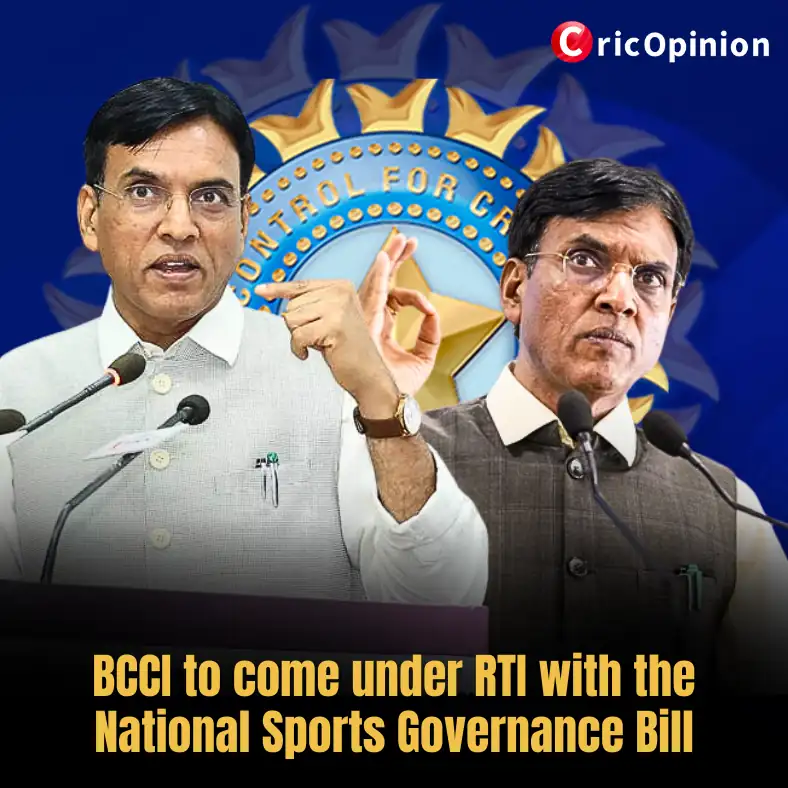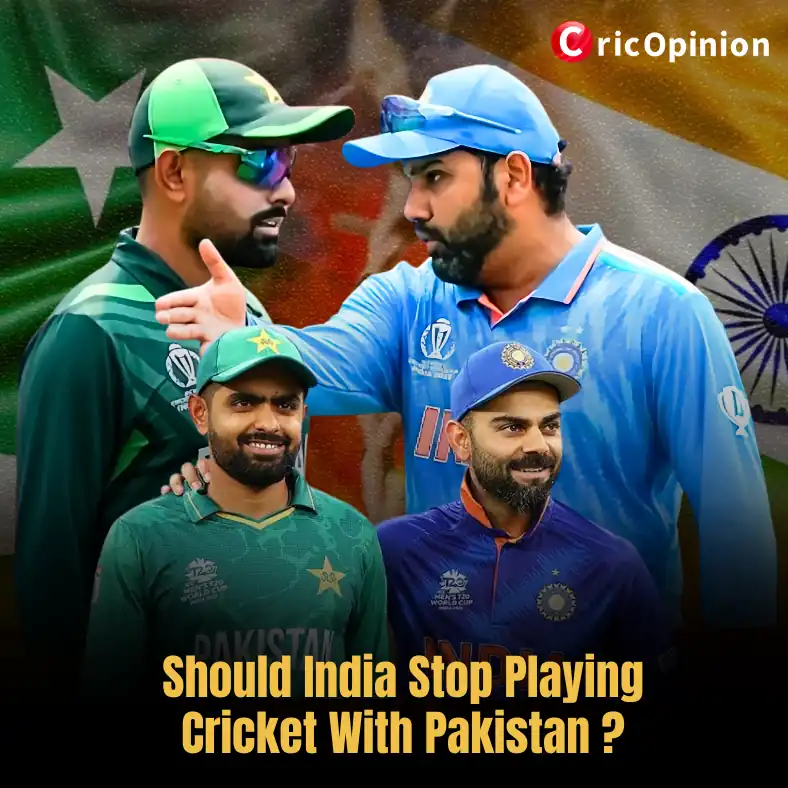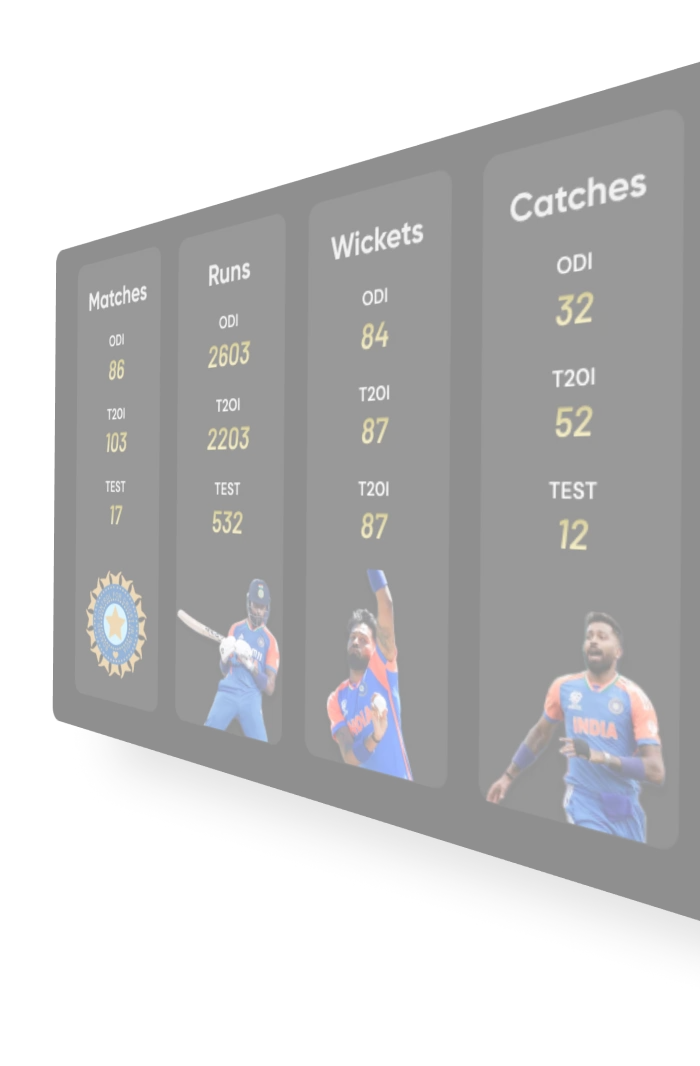
Table Of Contents
Generally, when compared to other sports such as football or tennis, cricket is not seen as an extreme active sport. There are times in the game when a player might not be involved in a swift movement, and that corresponds to lesser stress on a player's physicality.
While the prevailing notion of many suggests the same, science and numbers tell a separate story. As per a report by the University of Portsmouth, the heat generated by a batter is equivalent to a person running at 8 kmph. A batter could have to do the hard job of running between the wickets every other delivery. A bowler has to deliver the ball at a desired speed, and more often than not, this involves a high-speed activity. The fielders, as well, have to do a lot of running on the field. When this continues for a longer duration, players are bound to become tired. That said, it is just not the physical aspect of the game. There is more than just that.

BCCI to come under RTI with the National Sports Governance Bill

Should India stop playing cricket with Pakistan?

Take Home a Slice of Lord’s Cricket History
An obvious reason is the temperature of the air and the humidity present in it. In a worst-case scenario, a player could have to spend a total of close to 10 hours on the field. This is a commonplace event in a Test match. Sometimes, it could involve a lot of high-intensity running, as well. Not to forget, a few match situations could even force a cricketer to come back the next day in the morning to repeat the previous day's drill.
Another aspect that is usually not considered by outsiders is the kind of equipment that a cricketer has to don. When it comes to a batter, protective gear such as a helmet, gloves, and pads contributes to the heat retention. When a game goes on for a longer duration, the clothes could absorb the sweat, and this could further increase the weight of the garments. The uneasy factor shoots up this way!
The cricketers are those who have to spend all their time on the field. We talked about how heat generation happens, and as the temperatures increase, their task becomes tougher. Not to forget, the players spend hours training, as well, which further adds to the stress of their job.
Especially in a Test match, the demands of the format force a player to remain longer on the field. Since Tests are usually played in sunlight during summer, players have no respite in this matter.


Especially in a country like India, where the stadium infrastructure is not at its best, the heat impacts the fans going to the game, as well. Adding to this, across India, temperatures are usually high, and fans have to pay this price to enjoy the game.
Umpires, too, have one or two issues here. Since they are not involved in a direct physical activity, the consequences are less severe. That said, they remain on the field for long hours, and at times, they also take pauses along with the players.
Heat cramps are common across every sport that gets played where the temperatures are high. Especially in cricket and tennis, the prevalence is elevated. Due to the increase in body temperature, the muscles that are usually engaged during the play suffer cramps.
Heat Stroke is another condition that demands urgent attention from the medical staff. In this case, the thermoregulatory system of the body fails due to the higher temperatures. This leads to a lot of unstable conditions that need to be addressed at the earliest.


While players who are used to such conditions can manage to some extent, the phenomenon is very hard for cricketers who are on a tour. This mostly happens when a foreign cricketer visits the subcontinent.
Hence, boards prioritise acclimatisation for players when they are due for a long tour. This is important for the competitive spirit of the game, as well. Players can provide the best challenge when they are least bothered by situations out of their control.
Virat Kohli is seen as the fittest cricketer to grace the game. For a long period now, he has harboured serious levels of fitness, which has now motivated a generation of cricketers. However, it is fascinating to note that Virat himself has suffered issues due to heat cramps.
It was in the game against New Zealand in the 2023 ODI World Cup that this happened. The match was ensuing in Mumbai, and it had been a tough day for Virat in the city. He was also reaching close to his 50th ODI century, a first for anyone in the history of the game. There was a lot of running to do, and Virat had to take recurring breaks at one stage to address his cramps. Nevertheless, none of it affected as Virat went on to hit the century and create a landmark. If Virat has encountered problems with the heat, it is not unexpected to see many other cases of the same.


While we often focus on the physical aspect of the game, heat not just affects this aspect of a player. There are a lot of physiological impacts, as well.
It is tough for a player to mentally prepare himself when he is aware that he will have to do his duties in glaring heat. Heat is uncomfortable for any individual. Knowing this, sometimes, the presence of this thought at the back of a player's mind could affect his performance, as well. It could also be frustrating for a player in this regard.
When the players are unhappy and not fit, the game of cricket gets affected. Cricket is a slightly different sport when compared to other sports. It requires the viewers to invest a lot of time. Hence, it is expected that sports provide those engaging moments which merit a fan's investment.
With some key players missing games often, this may not be guaranteed. Worse, shortly, we could even witness games getting cancelled or postponed due to extreme heat. Already, rain is a big factor in the sport. Now, if even heat has an impact on the game, it could be a big dent to cricket's popularity.


Firstly, ICC must ensure that the impact of heat on the game is recognised at all levels. ICC should acknowledge this, talk to the players, and find out the issues associated with this topic. Information is key, and all the right channels of communication are being maintained.
Then, the schedules have to be generated such that places of severe heat are avoided. Usually, ICC does not consider weather in the calendar planning. We have often seen matches scheduled at venues when there was already a forecast that it would rain. While rainfall only affects the game, heat affects the players, as well. This must be noted and duly addressed. ICC must also give attention to the happenings within the game. Session durations in a Test match could be altered, and more breaks could be given to players for their overall safety.
While IPL 2025 had to endure quite a few twists and turns, there was another case study that was brewing in parallel. BASIS used 65 IPL games for their report, and shocking statistics have come out of that.
Heat Index is the unit against which the matches were rated. This index included a combination of air temperature and humidity to arrive at a number. It is said that around 36% of the games in IPL 2025 happened under "Extreme Caution" situations. In these games, the impact of heat was a severe hazard. Out of this, 12% of the games had a category of "Danger", where the risk was even higher.
Throughout the IPL 2025 season, many players had to suffer due to the extreme heat. While heat cramps were common, there were quite a few cases of heat stroke, as well.
It was the game between Delhi Capitals and Gujarat Titans in Ahmedabad. The temperature was close to 41 degrees Celsius. Experienced pacer Ishant Sharma fell sick because of the same and had to leave the field. Some other cricketers, such as Axar Patel and Prasidh Krishna, also faced the issue in the match.
BCCI and those who conduct the IPL have a plethora of options to ensure that the players and the fans do not face the wrath of the heat. There are rumours that the window for IPL could be extended. If that happens, BCCI needs to take measures to ensure the safety of players.
One key element is to plan the tournament in a way that avoids scheduling games during heat waves. It is important to select the date and venue accordingly. Organisers can also fully do away with a day game, which has the highest impact of heat on players. Of course, venues with less of an impact of heat can be chosen, as well. The rulemakers can be flexible with the usage of substitute fielders, which can be of great help in a day game.






More Links